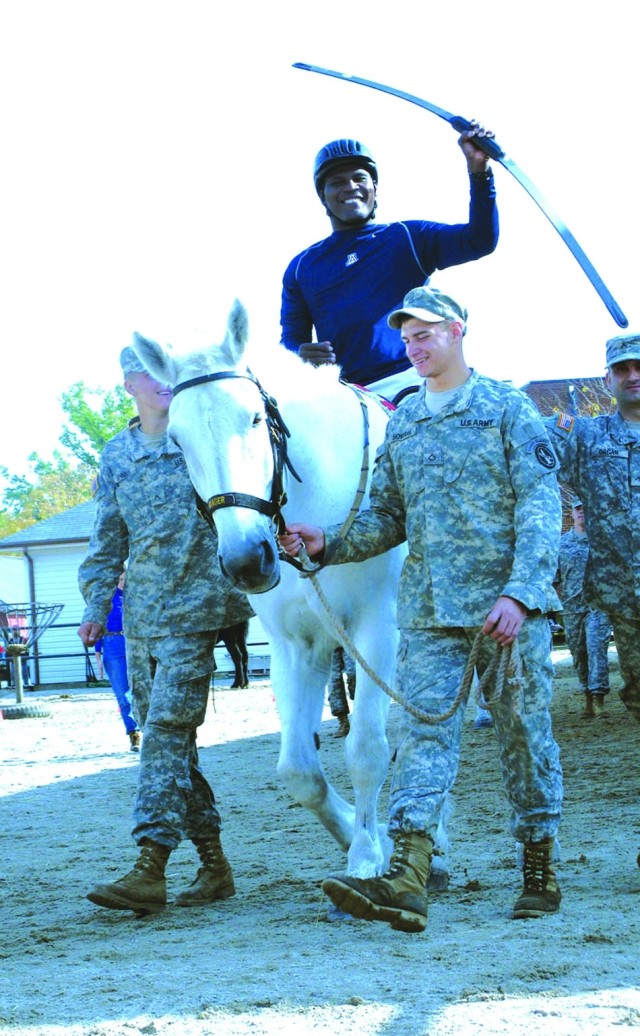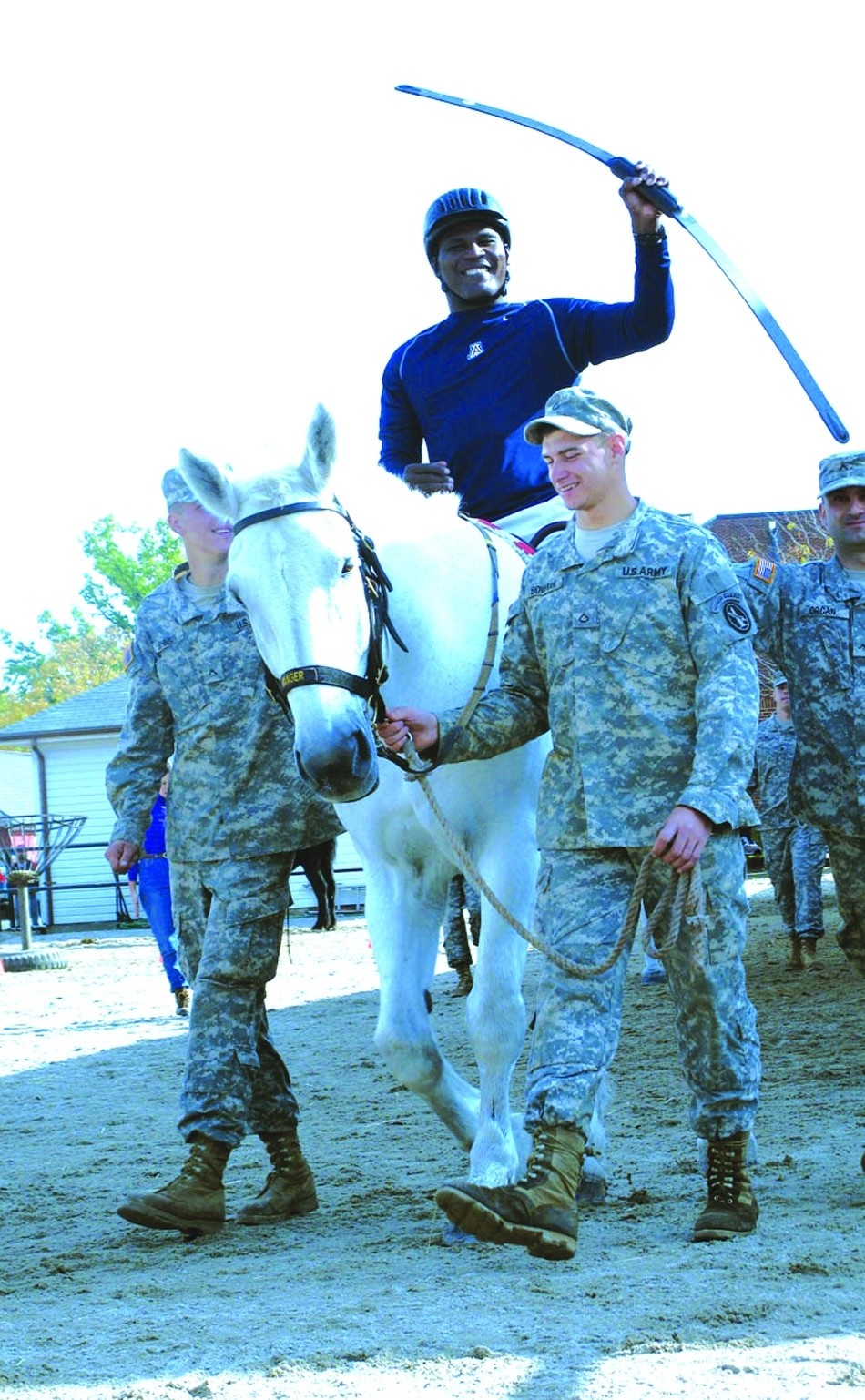
Just three months after a rocket-propelled grenade took off her lower right leg in Mosul, Iraq, SGT Amanda Mikulka is back to doing two things she loves - hunting and horseback riding.
She hopes to do a lot of hunting during her 30-day trip home to Michigan. When she returns, Mikulka will continue to fulfill her passion for horses and recover from her injuries with help from the Old Guard at Fort Myer, Va.
Since Walter Reed Army Medical Center began a therapeutic riding program in spring 2006, 25 Soldiers like Mikulka have had the opportunity each week to work on balance and coordination skills courtesy of the Old Guard's caisson platoon.
Benefits
According to Mary Jo Beckman, therapeutic riding instructor, the benefits of the therapy for patients, especially amputees, include improved balance, increased efficiency using prosthetic limbs and overall confidence.
"When you move with the horse, it strengthens your core. It really helps an amputee with balance because the strides of the horse move the body as if walking," said Beckman.
LTC Greg Gadson, 2nd Battalion, 32nd Field Artillery, a broad-shouldered officer who lost both legs after an IED explosion in May, found the therapy helped his overall stability.
"It really helps strengthen your core. I could feel it in my abs after the first couple times. I'm really top-heavy so building balance is key when you're on prosthetics," Gadson said.
SPC Bob Remmel, who was shot in the stomach and ended up losing 40 pounds during a month and a half in the hospital, saw his walking was stiff because of his injury. His therapist suggested he try therapeutic horseback riding to help "loosen him up".
A few years ago, Beckman saw a presentation on therapeutic riding being used to help Vietnam Veterans. She realized her long-time passion for horseback riding may be a good outlet to assist Soldiers in rehabilitation.
In March 2006, she received permission to start the pilot program and began coordinating with the caisson platoon regarding equipment and horse requirements.
Josef Butkis, Walter Reed occupational therapist, followed the Soldiers during the pilot and tested their balance before and after each ride. With the benefits of the equine therapy documented, Beckman's program received the "go-ahead."
Beckman works closely with Walter Reed therapists to come up with a specialized lesson plan for each Soldier and careful thought is put into which horse each Soldier rides.
Members of the caisson platoon evaluated the horses, selected those who would participate in the program, and trained them for the sessions.
"I try and see what riders need. The key is to have flexibility. Come in with a game plan but be able to change it at a moments notice," Beckman said.
She explained that many first-time riders will be assigned to Mickey, who is very easy-going. Then they will move them on to Minnie, Wiley, or Ranger, depending on what the Soldiers need and how they can best be challenged to progress.
During his four sessions at Fort Myer, Gadson has found a match in Ranger, Beckman said. "(Gadson) has grown comfortable with Ranger," she said. "They move well together. We'll keep them together. Why mess up a good thing'"
Soldiers help
Volunteers from the caisson platoon are trained as horse leaders and side walkers and help guide horse and Soldier through the exercises.
CPT Elizabeth Painter of the physical therapy department added that it is beneficial for Warriors in Transition to work with other Soldiers like the Old Guard again.
"It's great to get them out of the hospital environment for a while. It's good for them to be out with Soldiers too," she said.

Social Sharing